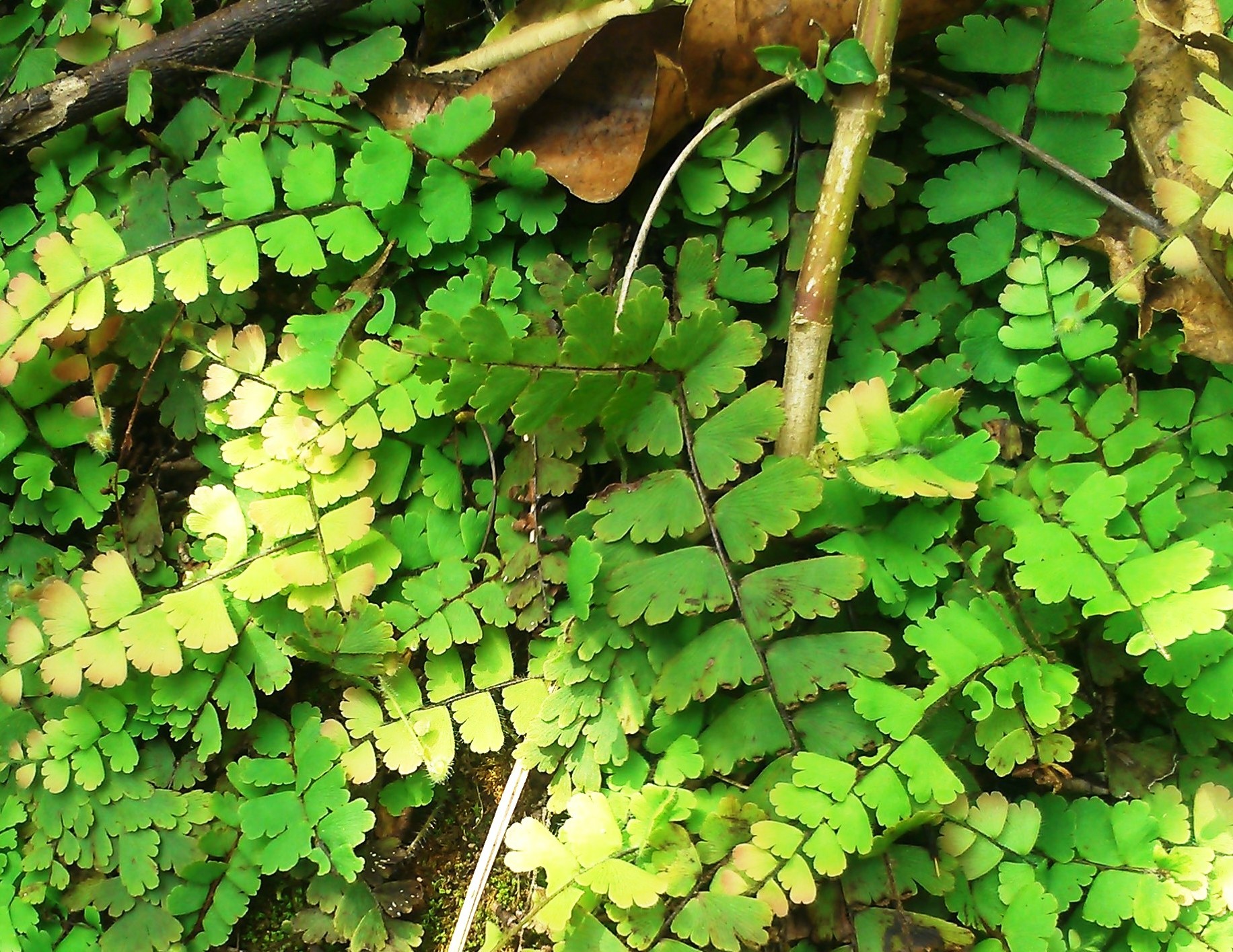Pteris togoensis

|
|
Pteris togoensis Common Names: Togo Brake Fern, African Brake Fern Scientific
Classification Kingdom: Plantae Class: Polypodiopsida Order: Polypodiales Family: Pteridaceae Genus: Pteris Species: P. togoensis Binomial Name: Pteris togoensis Hieron. Synonyms: Pteris kamerunensis Hieron., Pteris quadriaurita sensu Sim., Pteris biaurita sensu Sim., Pteris quadriaurita subsp. togoensis (Hieron.) Schelpe Morphological Description Pteris togoensis is a terrestrial fern characterized by an erect or shortly
creeping rhizome covered with dark brown scales. The fronds are robust,
clumped, and can grow to lengths of 1–1.5 m. Key features include: · Rhizome: Short, erect to creeping, 2–5 cm long, densely scaly with
linear, brown scales (3–5 mm long) · Petiole: Reddish-brown at the base, transitioning to smooth green
above, 20–50 cm long, with sparse scales · Fronds: Bipinnatifid, with a lamina of 7–14 pairs of lateral pinnae,
linear-oblong (10–25 cm long, 2–4 cm wide), sub-coriaceous, featuring yellow
glands on the abaxial surface · Sori: Linear, continuous along the margins of fertile pinnae,
covered by a reflexed indusium The fern’s glossy,
leathery fronds and glandular undersides distinguish it within the Pteridaceae
family (Abotsi et al., 2015). Distribution and Habitat Pteris togoensis is widely distributed across tropical Africa, with confirmed
records from Togo, Principe Island, Bioko Island, Senegal, Guinea, Sierra
Leone, Liberia, Ivory Coast, Ghana, Nigeria, Cameroon, Central African
Republic, Gabon, Congo, Angola, Sudan, Madagascar, and Mali. It thrives in: · Moist Forests: Shady understories of lowland rainforests with high humidity
(70–90%) · Hilly Areas: Slopes and ravines at elevations from sea level to 1,200 m · Riverine Zones: Along stream banks and wet forest floors It prefers rich,
well-drained soils (pH 5.5–7.0) and temperatures of 20–30°C, often growing in
association with other ferns and understory plants (Roux, 2009). Ethnopharmacology While specific
ethnopharmacological studies on Pteris togoensis are scarce, its use in traditional
medicine aligns with broader practices involving the Pteris genus across Africa and Asia. Available
data and related species suggest: · Anti-inflammatory: In Nigeria, leaf poultices are used for
swelling and rheumatism. Related Pteris species (e.g., P. multifida) show inhibition of paw edema by 40–50% in rats at 200 mg/kg,
linked to flavonoids (Bandyopadhyay & Dey, 2022). · Antimicrobial: In Togo, decoctions treat skin infections. Ethanol extracts
of Pteris vittata inhibit Staphylococcus aureus (MIC 0.25 mg/mL), suggesting potential
in P. togoensis due
to shared terpenoids (Karou et al., 2011). · Antifungal: In Ghana, fronds are applied to fungal sores. Pteris species extracts show activity
against Candida albicans (MIC 0.5 mg/mL), attributed to phenolic compounds
(Mgbeahuruike et al., 2017). · Wound Healing: In Cameroon, crushed leaves aid wound closure, consistent
with Pteris genus properties
enhancing fibroblast activity (Teshome et al., 2009). These uses require
specific validation for P. togoensis, but its phytochemical similarity to studied Pteris species supports potential therapeutic
roles (Abotsi et al., 2015). ⚠ Toxicity Profile: Specific toxicity data for P. togoensis is lacking, but ferns generally may
contain thiaminase (0.1–0.5 mg/g), which degrades vitamin B1, potentially
causing deficiency if consumed in large amounts (LD₅₀ > 5,000 mg/kg in rats
for related species). Skin irritation from glandular secretions (PII ≈ 1.0) is
possible. Caution is advised until further studies confirm safety (Duke, 2001). Phytochemistry While direct
phytochemical analysis of P. togoensis is limited, related Pteris species provide insight into its likely
composition: · Flavonoids: Quercetin, kaempferol (0.1–0.3%), with anti-inflammatory and
antioxidant properties · Terpenoids: β-caryophyllene, polycarpol, contributing to antimicrobial
activity · Phenolics: Gallic acid, catechins (0.05–0.2%), enhancing antifungal
effects · Glandular Secretions: Yellow glands suggest sesquiterpenes,
potentially bioactive These compounds,
inferred from genus studies via GC-MS, suggest therapeutic potential awaiting
confirmation (Bandyopadhyay & Dey, 2022). Additional Uses · Ecological: Provides habitat for small vertebrates and invertebrates,
stabilizes soil in forest understories · Cultural: Used in Nigerian rituals for cleansing and protection due to
its lush appearance · Ornamental: Cultivated for its attractive fronds in shaded tropical
gardens References
External Links More Pictures |
|
| Compounds of Pteris togoensis |
|
| References |